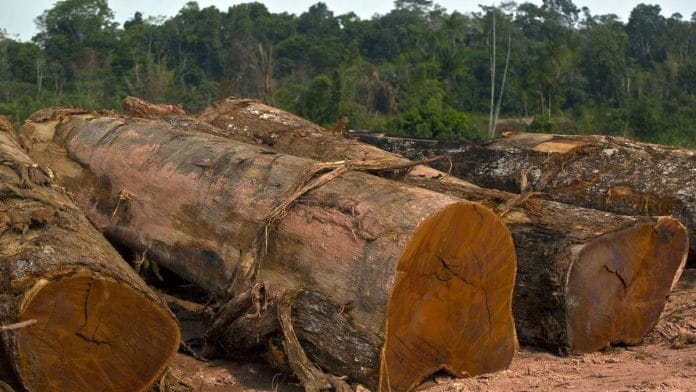New Delhi: Unsustainable logging, fishing and hunting — practices that are projected to increase in the coming years — is driving a million species of plants and animals to extinction, a new report by an intergovernmental agency has found.
The sustainable use of wild species is “critical for food security & improving nutrition in rural and urban areas worldwide”, but is threatened by a combination of overexploitation, pollution, climate change and the advent of alien invasive species, says the report released by the Intergovernmental Science-Policy Platform on Biodiversity and Ecosystem Services (IPBES), Friday.
Considered an authority equal to the United Nation’s Intergovernmental Panel on Climate Change (IPCC), the IPBES study on biodiversity is the result of four years of work, drawing from over 6,200 sources. Much like IPCC reports, the summary of the IPBES report was approved by 139 member states — including India — in Bonn, Germany Friday.
The findings are likely to weigh in on discussions at the Convention on International Trade in Endangered Species of Wild Fauna and Flora (CITES), scheduled to take place in November this year.
“With about 50,000 wild species used through different practices, including more than 10,000 wild species harvested directly for human food, rural people in developing countries are most at risk from unsustainable use, with lack of complementary alternatives often forcing them to further exploit wild species already at risk,” said Dr. Jean-Marc Fromentin, co-chair of the IPBES assessment, in a statement.
Also read: Monsoon has turned normal, IMD says. But it really hasn’t if you see regional variations
Overexploitation of wild species
About 50,000 wild species “are used for food, energy, medicine, material and other purposes through fishing, gathering, logging and terrestrial animal harvesting globally,” according to the report.
They also form the basis of cultural and economic activities. For example, one in five people worldwide depends on wild plants, algae and fungi for nutrition and income. This is particularly true for women, children, and landless farmers. Sustainable uses of wild species are often embedded in indigenous knowledge, says the report.
About 34 per cent of 10,098 wild species from 10 taxonomic groups were found to be used sustainably. However, the survival of around 12 per cent of wild tree species is threatened by unsustainable logging, 34 per cent of marine wild fish stocks are overfished, and unsustainable hunting is a threat for 1,341 wild mammal species, according to the report.
“Large-bodied mammals are the most targeted species for subsistence and commercial hunting, as these animals provide more meat for consumption and sale to generate more economic benefits for hunters’ households,” says the report, adding that global trade in wild species “has expanded substantially over the past 40 years in terms of volumes, value and trade networks”.
The report argues that biodiversity conservation has the “untapped” potential to meet various sustainable development goals, but that this potential is “overlooked”.
The sustainable use of wild species is likely to be challenged by climate change and the growing demand for technologies that make extraction of natural resources easier.
“Overexploitation is one of the main threats to the survival of many land-based and aquatic species in the wild”, said John Donaldson, professor and another co-chair of the assessment.
He added: “Addressing the causes of unsustainable use and, wherever possible reversing these trends, will result in better outcomes for wild species and the people who depend on them.”
Move towards sustainable use
Policy instruments and tools “commonly fail when they are not tailored to local ecological and social contexts”, says the report, which highlights the significant role indigenous communities can play in guiding sustainable uses of wild species. Land tenure and rights to resources can contribute to sustainability, the report observes.
Referring to ownership and dependence on wild species by poor or indiginous communities, the report highlights that the “Fairness, rights and equitable distribution of benefits are essential to ensure the sustainable use of wild species”.
It adds that “market-based incentives, such as certification and labelling”, of “organic” products are of mixed effectiveness when it comes to the sustainable use of wild species.
Aligning policies for use of wild species across sectors is among the suggestions the report makes to move towards more sustainable practices.
“Sectoral policies designed to advance national economies and territorial connections can escalate exploitation of wild species, displace local uses, and exacerbate poverty,” it says, adding, “If well designed, strategic combinations of policies can simultaneously alleviate multiple drivers of unsustainable use and create a supportive environment for sustainable use of wild species”.
(Edited by Poulomi Banerjee)
Also read: No rehab for rare species, oil spill checks — govt panel flags gaps in Great Nicobar vision plan






